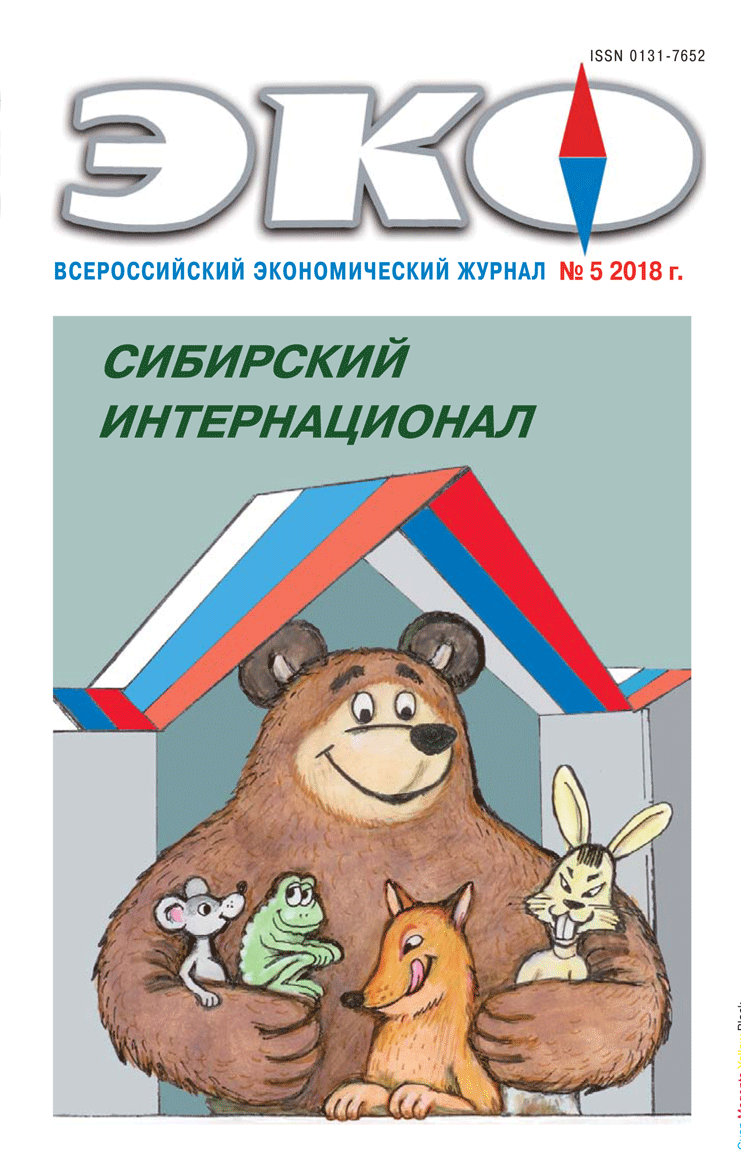COVER STORY: SIBERIAN INTERNATIONAL
Published 2018-07-09
Keywords
- NATIONAL STRUCTURE,
- RELIGION,
- POPULATION,
- DIVERSITY,
- RUSSIA
- SIBERIA ...More
How to Cite
1.
Bufetova А, Kolomak Е, Khrzhanovskaya А. National and Religious Diversity of Siberian Regions. ECO [Internet]. 2018 Jul. 9 [cited 2026 Jan. 20];48(5):28-44. Available from: https://ecotrends.ru/index.php/eco/article/view/1200
Abstract
The paper testes hypothesis about higher ethnic and religious heterogeneity of Siberian population. Estimations of the national and religious diversity for the Siberian regions are obtained based on the census of 2002 and 2010 years and data on religious preferences for 2012 and 2015 years in Russian and in Siberia. The analysis is based on the indexes of diversity and polarization. The resultsdo not confirmed the assumption that Siberia has high national diversity; moreover the region demonstrates more rapid decrease of the ethnic heterogeneity comparing with Russia. Heterogeneity of the religious structure of the Siberian population is higher than in the whole country, but tendency toward homogeneity is more pronounced.References
1.
Буфетова А. Н., Коломак Е. А. Национальная неоднородность в регионах России//ЭКО. 2017. № 4. С. 110-123.
2.
Даймонд Д. Ружья, микробы и сталь. М.: АСТ, 2016. 720 с.
3.
Ягольницер М. А. Диагностика условий формирования инновационных кластеров в регионах России: математико-статистический подход//Экономическое возрождение России. 2014. № 2. С. 93-104.
4.
Becker S., Woessmann L. Was Weber wrong? A human capital theory of Protestant economic history. The Quarterly Journal of Economics. 2009. Vol. 124. P. 531-596.
5.
Grosfeld I., Rodnyansky A., Zhuravskaya E. Persistent Anti-market Culture: A Legacy of the Pale of Settlement after the Holocaust. American Economic Journal: Economic Policy. 2013. Vol. 5. P. 189-226.
6.
La Porta R., Lopez-de-Silanes F., ShleiferA., Vishny R. Trust in Large Organizations. American Economic Review. 1997. Vol. 87. P. 333-338.
7.
Menyashev R., Polishchuk L. Does Social Capital Have Economic Payoff in Russia? Higher School of Economics. Working Paper. 2011. № WP10/2011/01.
8.
Montalvo J., Reynal-Querol M. Why ethnic fractionalization? Polarization, Ethnic Conflict and Growth. UPF Working Paper. 2002. № 660.
9.
Tabellini G. Institutions and Culture. Journal of the European Economic Association. 2008. Vol. 6. P. 255-294.

